The news, from last April: KAWS’ parody of the Simpsons Yellow Album (titled The Kaws Album), commissioned by Bathing Ape creator Nigo, sold at a Sotheby’s auction for 115,966,000 HKD (roughly US$14.8 Million).
Bill Morrison, the artist of the Yellow Album cover, was a bit angry when he heard the news:
I have joined Russ Heath, John Romita, Mike Sekowsky, Tony Abruzzo, and many other comic artists who have been ripped off by “fine artists.” This mostly traced interpretation of my “Simpsons Yellow Album” art sold for 14.78 million dollars!
For comparison, here are the three covers:
THE KAWS ALBUM
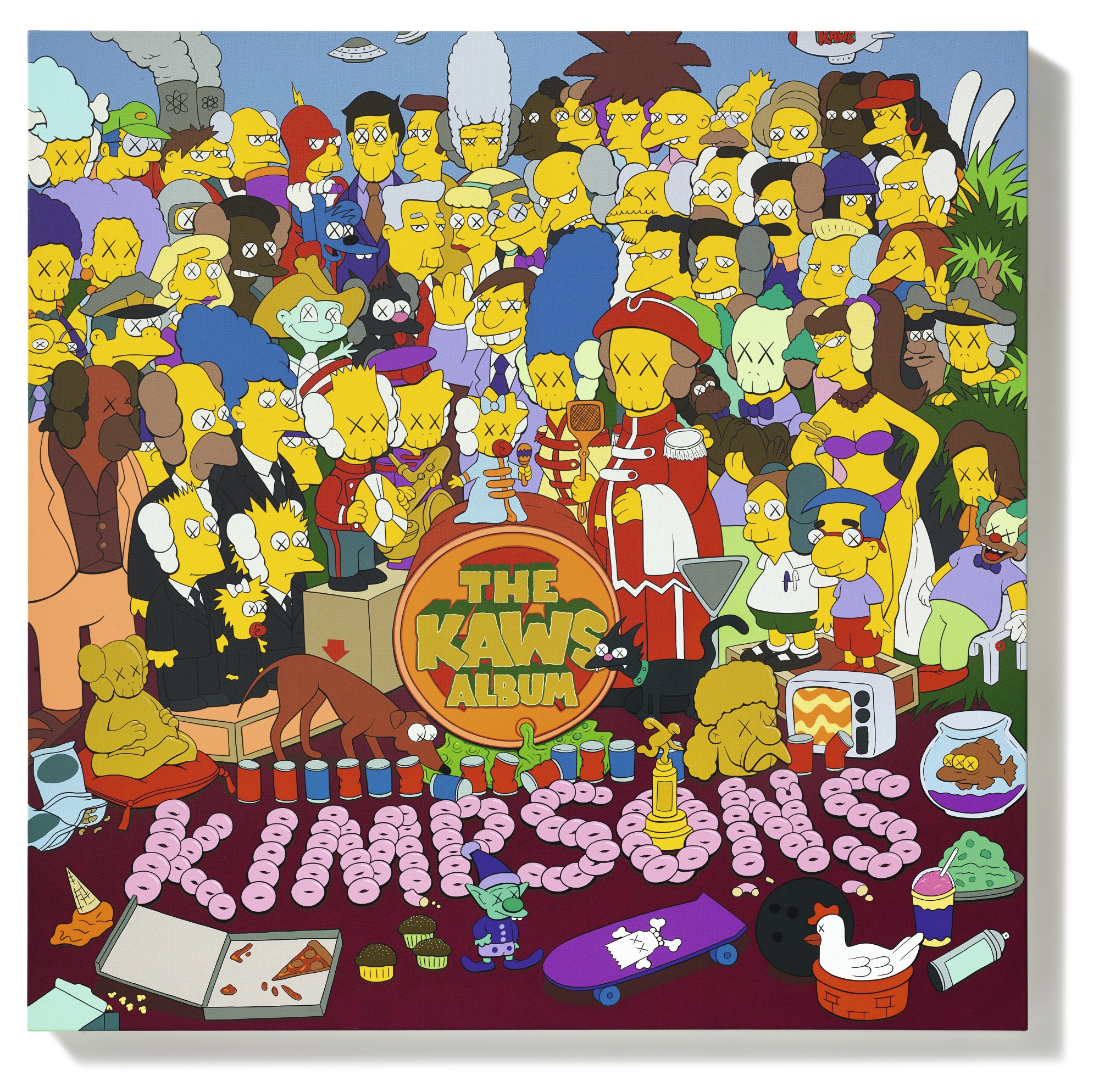
The Yellow Album
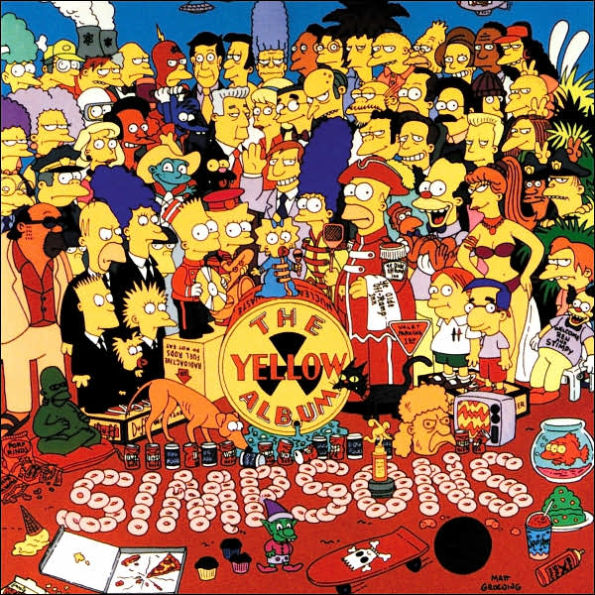
Sgt. Pepper’s Lonely Hearts Club Band
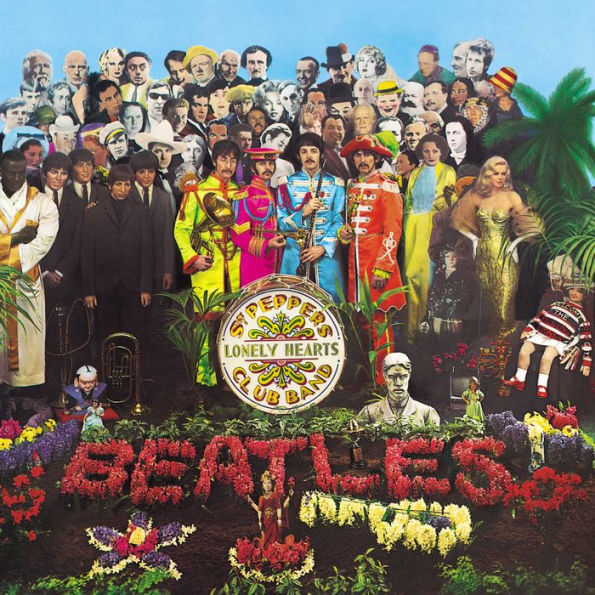
In the world of Fine Art, the key word is “appropriation.” Artists take an object, and re-conceptualize and re-contextualize that object. It can be something as simple as collage and assemblage, or as problematic as a graphic re-interpretation of a news photo. Sometimes scandalous, but rarely due to the recycling of an image or object created by someone else.
It’s been a thing since the age of mass-produced images and products. Add in broadcasting of images via movies and television in the mid-1900s, the use of artwork to sell product, the commodification of artwork, and it’s no surprise that the Pop Art movement used popular images to comment upon a consumerist society. As Morrison notes above, comics scholars have long noted the interpretations of Andy Warhol and Roy Lichtenstein based on panels found in comic books, with no attribution or compensation to the original artists. (Comics historians have even noted possible art forgeries or errors in dating.)
In the comics industry, it gets even murkier.
There are swipes, where artists will copy a pose or panel, usually as part of the interior story. Sometimes they are overt, such as when recreating a character’s iconic origin, recalling the iconic storytelling of the original. It’s not a big sin, as swipe files and photo reference are used by many illustrators.
Homages are usually done with respect for another artist’s work. Homages can also be satirical or parodic, calling back to the original for extra meaning. If done correctly, the new artist adds “after [original artist]” to the signature, or “apologies to [name]”. The latter is usually found in editorial cartoons.
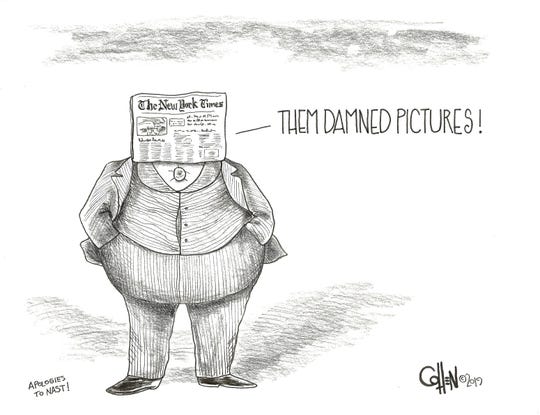
And then, there is out-and-out counterfeiting. Walk any Artist Alley at any comic con, and you will spot numerous violations of both copyright and trademark law. Either someone has made an “homage” to an iconic cover and printed multiple prints and posters for sale, or they have reinterpreted a beloved character.
Trademark is more serious. Every unauthorized copy of a trademarked character is a possible means to annul that never-ending trademark. This is why Comic-Con International fought over the use of “Comic-Con” and “comic con,” and why Disney once sent nasty letters to every daycare that paints Mickey or Donald on a fence or wall.
Copyright…is in the eye of the property owner. Disney could easily walk the aisles of any convention and hand out cease-and-desist letters to anyone selling unlicensed reproductions. Over in Japan, publishers use the amateur dōjinshi art scene to discover new talent, rarely enforcing the copyright.
Some use satire or parody as a defense, thanks to Larry Flynt and MAD Magazine. Note that this can be adjudicated. This is why cease-and-desist letters from law firms are so effective; legal representation can be costly, even if you win.
Another option is producing a derivative work. This is also murky, and can be adjudicated as well. The key criteria is: How transformative is the new work? Is it different enough from the original work?
So how does all this relate to KAWS and the Simpsons?
Is Bill Morrison justified in his anger? Sure. He didn’t get credit, and someone who created a derivative work of his derivative work made lots of money. (KAWS was commissioned by NIGO. NIGO gets the millions from the art auction. KAWS was probably paid thousands for the originals, but this auction of his works also increases his marketability, and future originals might sell for millions.)
Morally and legally, Morrison is on shaky ground. First, the Yellow Album cover art was work-for-hire, with the signature of Simpsons creator Matt Groening printed on the artwork and all of the characters owned by 20th Century Fox (now Disney). Bill Morrison cannot legally produce posters to sell without a license from Disney, due to copyright and trademarks. He should get credit, both from Disney and KAWS. (I don’t know if he was credited on the CD insert.)
Second, even though this cover is a parody of the Beatles album cover, there should have been some acknowledgement to the original designers. I don’t know if Gracie Films paid a designer’s fee to the creators of the original cover. The practice is not common in the comic book industry with homage covers, although John Byrne did publicly state he did send a voluntary “designer’s fee” remittance to the original artists of covers he homage’d in the late 1980s. Given the historical mistreatment of comic book creators by publishers, it’s shameful if current creator-owned books do not send a token payment to the original cover designers or to a charity like The Hero Initiative.
Third, both are derivative works. Is KAWS’ painting transformative enough with his trademark skull-and-crossbones motif? That’s up to the court of public opinion, since Fox and Disney have yet to file a lawsuit over this or the other fan art KAWS has produced.
Comics fans and professionals generally do not appreciate derivative works of art, regardless of the name attached. (Rob Granito being the textbook example.)
…unless it’s an homage variant cover, in which case, fans will pay good money to snag a copy.


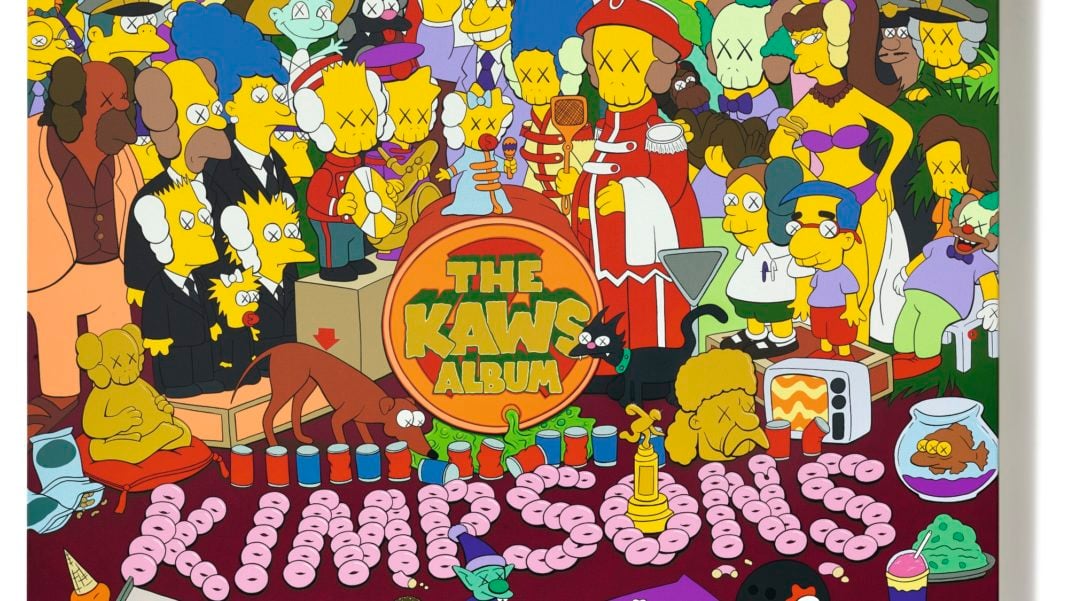






KAWS and Nigo are awesome.
First off, Morrison isn’t screaming “lawsuit”, so pointing out that he doesn’t have grounds for one is somewhat irrelevant.
Second, and this is a bigger point that you glossed over, various media discussing the sale, including what Morrison is commenting on, aren’t mentioning “The Yellow Album” at all.
Even if one accepts that it is a parody, it isn’t, as is being constantly reported, a parody of Sgt Pepper’s anymore than “On Top of Spaghetti” is a parody of “On Top of Old Smokey”.
And I don’t see the artist doing anything to say “you’re giving me too much credit” or set the record straight.
The bulk of the credit for the arrangement shouldn’t go to this particular artist, regardless of who you want to argue it should go to.
This artist didn’t take Sgt Pepper’s & parody it with Simpsons characters.
He took a parody of Sgt Pepper’s that was already done with Simpsons characters & parodied that.
If there’s no harm in what he did & it’s creative enough to stand as its own work, why isn’t the artist out there correcting the media & saying “I didn’t use Simpsons characters to parody Sgt Pepper’s, like people are claiming. That was all someone else, long before me.”?
I’ll point out that even Rob Granito made that effort.
The comic industry is incredibly hypocritical on the issue of appropriation, when they scream murder over anything the remotely is influenced by their work, but then every few years will gladly cash the paychecks when the Big 2 pay them to do cheaply conceived variant covers inserting superheroes into famous paintings or iconic album covers in their style. There is no homage in those pieces, as they are blatantly remixing iconic imagery as a sales gimmick and paying very little respect to the original works or even coming close the artistry.
Its also funny that Morrison is kind of casually forgetting that his incredibly iconic Sgt Pepper’s cover is literally made up of collaged, appropriated images taken from dozens of photographers and illustrators and never got “the credit” or “the fame” or “the royalties” he got from that record cover.
Coincidentally, Shepard Fairy was famously sued decades later for basing the Obama Hope poster on a news service photograph.
I don’t know where the notion that I’m angry came from. I do feel my work was ripped off, but I’m more amazed than outraged that someone would pay multiple millions for something that is basically a tracing of my work. If I do feel any anger, it’s for the fact that “fine artists” keep blatantly stealing the images of hard-working comic artists, and it’s just accepted as okay. Most comic artists don’t make a lot of money compared to the time they put in creating their images, so to have their work lifted, turned into “fine art” and sold for millions feels like a real injustice to me.
Comments are closed.